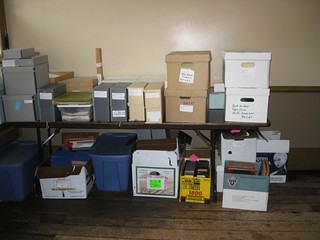By Carl Weiss
| Garrison Keillor (Photo credit: Wikipedia) |
“A good newspaper is never
nearly good enough, but a lousy newspaper is a joy forever.” At least that’s
the way that Garrison Keillor saw it.
Through the years many notables have weighed in on the veracity of
newspaper reporting, their opinions formed mostly by the way in which they were
portrayed by the media.
President Lyndon Johnson’s opinion
of reportage was framed by this quote, “The fact that a man is a newspaper
reporter is evidence of some flaw of character.”
The late actress Bette Davis
on the other hand quipped, “With the newspaper on strike, I wouldn’t consider
dying.”
Love them or hate them, newspapers
in the US have been a source of controversy since the first newspaper was
printed in Boston in 1690.
(Coincidentally, only one edition of this newspaper was published before
the paper was suppressed by the government.)
However, it wasn’t long before a longer lived successor made it into
print in 1704, followed by other weeklies in New York and Philadelphia. For the next two hundred years, newspapers
ruled the roost in cities and towns as the place where everything from curiosities,
calamity, births, deaths and ads were made available to the masses.
While the broadcast media of
radio and television made a bit of a dent in the armor that newspaper
publishers wore, so popular and powerful a medium was it that by 2007 there
were 6,580 dailies in the world with a combined 395 million readers. During its heyday newspapers turned a number
of publishers into moguls and a number of writers into celebrities.
“Newspaper readership is
declining like crazy. In fact, there’s a
good chance that nobody is reading my column.” – Dave Barry
Just two years after the
newspaper business reached the above mentioned high water mark came its sudden
implosion. On Independence Day 2009,
Business Insider reported,
“As you may have noticed,
newspapers have had a rough 2009. But you may not quite appreciate the
magnitude of the collapse. So far this year:
·
105 newspapers have been shuttered.
·
10,000 newspaper jobs have been lost.
Read more: http://www.businessinsider.com/the-death-of-the-american-newspaper-2009-7?op=1#ixzz2xSpbCMrm
While the Great Recession had
something to do with the problems that many print venues faced in 2009 it was
by no means the entire story. Since the
early years of the twenty-first century, the rise of the Internet had caused a
major decline in circulation and advertising revenues at major dailies around
the world. No longer a monopoly for such
things as classified advertisements, free classified ad sites such as Craigslist,
began to undermine the very foundations upon which newspapers were built.
“The decline in advertising revenues affected both the print
and online media; print advertising was once lucrative but no longer is, and
the prices and effectiveness of online advertising are often lower than those of their print precursors. Besides
remodeling advertising, the internet has challenged the
business models of the print-only era by democratizing and crowdsourcing both publishing in general (sharing information with others)
and, more specifically, journalism (the work of finding,
assembling, and reporting the news). In addition, the rise of news aggregators, which
bundle linked articles from many online newspapers and other sources,
influences the flow of web traffic.” – Wikipedia
| Decade this far wealth vs internet growth (Photo credit: Wikipedia) |
The double whammy of economic
decline combined with the rise of the Internet was like the perfect storm to
the newspaper industry. The years
2009-2013 saw not only the demise of a number of newspapers that had been
printed for many years, but it also saw a number of prominent dailies changing
hands, including most recently the Boston Globe and the Los Angeles Times. The Globe which had been owned for twenty
years by the New York Times was sold on October 24, 2013 to John W. Henry
(owner of the Boston Red Sox) for $70 million in cash.
Other dailies were not so
fortunate. Overall, the industry has
lost more than $40 billion in revenue in the past ten years alone. And the trend is not predicted to end any
time soon.
The Pew Research Center’s annual State of the Media 2013 report,
which came out this morning, suggests the industry’s fundamentals are still
somber:
·
Print advertising fell again, and not by a
little — down $1.5 billion in 2012 to dip below $20 billion for the first time
since 1982.
·
Classifieds losses are no longer the
culprit. National advertising, already weak in 2011, fell by roughly 10
percent. That suggests that the shift of budgets to a range of digital
marketing options is accelerating. The exception is preprinted inserts, for now
still an essential part of the marketing mix for major retailers.
·
Digital advertising, its rates ever lower,
grew very slowly (3 percent) and came nowhere close to covering print losses
(one dollar gained for every 16 lost in print). Audience for smart phone and
tablet news reports continues to grow quickly, but accompanying advertising is
largely a no-show.
Statistically speaking, even
a sagging economy is not enough to account for the industry’s fate. In fact, the revenues didn’t so much
disappear as relocate. If you look at
the biggest online advertising winner during the same time frame (Google) you
will notice that since 2009 their revenues have soared to $46 billion while the
newspaper industry has seen its revenue decline to around $20 billion. Coincidence?
 toward
dissolution. A number of dailies have
accomplished this by gutting their reporting staff, while others have taken the
“If you can’t beat them, join them” stance by attempting to merge print and
online venues. Every daily under the sun
has commissioned an online version where they stream some stories and offer
ads. While this has helped stem the tide
somewhat, it is still unlikely to turn the financial slide around for most
print venues. What is needed is
innovation. Here are a few ideas being touted within the industry.
toward
dissolution. A number of dailies have
accomplished this by gutting their reporting staff, while others have taken the
“If you can’t beat them, join them” stance by attempting to merge print and
online venues. Every daily under the sun
has commissioned an online version where they stream some stories and offer
ads. While this has helped stem the tide
somewhat, it is still unlikely to turn the financial slide around for most
print venues. What is needed is
innovation. Here are a few ideas being touted within the industry.
1. E-Readers - Hearst, which owns the Seattle Post
Intelligencer, is experimenting with the idea of creating a Kindle-like
electronic-reader device for its publications. People would receive the gadget
when they subscribe, and it would regularly download issues. While there are
still questions about how cheaply Hearst could create such a device, it shows
that its executives are thinking outside the box, rather than just throwing in
the towel. http://www.csmonitor.com/Innovation/Tech-Culture/2009/0311/newspaper-failures-are-old-news-it-s-time-to-focus-on-solutions
2. Erect a Pay Wall – A number of dailies including the New
York Times and Newsday offer readers a limited number of articles for free. Those who desire more access pay a
subscription fee to gain access to the publication’s electronic version.
3. Create Interactive Newspapers - The idea would be to
bring interactivity to the newspapers and indulging the reader into it. A similar
kind of thing has been once done in India by Volkswagen where they attached a
recorded message, which played whenever a reader unfolded the last page [1].
Touch screens of suitable dimensions with some flash memory would be stitched
into the newspapers, which would be pre-programmed. A user would just need to
touch the screen to get the video played. Similar would be the audio player,
which on selection would read out the particular news. To get an idea how it
would look like, recall the scene in Harry Potter and The Sorcerer’s Stone
where one can see that characters in movie while reading newspapers whose
layout and content is changing magically. Today newspapers would like to make
it happen digitally. http://www.slideshare.net/ankitmahapatra22/interactive-newspaper-the-next-big-thing-in-newspaper-industry
4. Create new reporting models - New online models will
spring up as papers retreat. One non-profit group, NewAssignment.Net, plans to combine the
work of amateurs and professionals, to produce investigative stories on the
internet. Aptly, $10,000 of cash for the project has come from Craig Newmark,
of Craigslist, a group of free
classified-advertisement websites that has probably done more than anything to
destroy newspapers' income. http://www.economist.com/node/7830218
While the problems in the
newspaper industry are many and the solutions few, what is clear, is that if
print venues hope to survive in the digital age they need to find a model that can cross the generation gap to deliver all the news that’s fit to stream. To do this they are going to have to start innovating as well as interacting with and listening to their readers.
print venues hope to survive in the digital age they need to find a model that can cross the generation gap to deliver all the news that’s fit to stream. To do this they are going to have to start innovating as well as interacting with and listening to their readers.
“While editors and newspaper owners currently fret over
shrinking readership and lost profits, they do the one thing that insures
cutting their own throats; they keep reducing space for the one feature that
attracts new young readers in the first place; the comic strips.” Elayne Boosler
Carl
Weiss is president of Working the Web to Win, a digital marketing agency in
Jacksonville, Florida. He is also co-host of the weekly web radio show of the same name as well as the YouTube series.
















